The Value of Socks: Pricing, Trends, and Consumer Insights
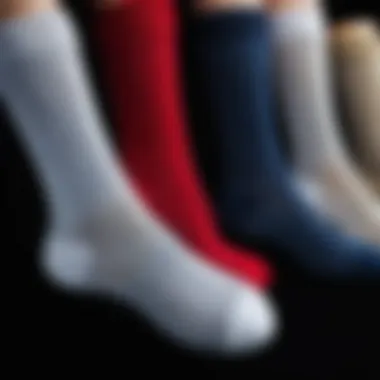
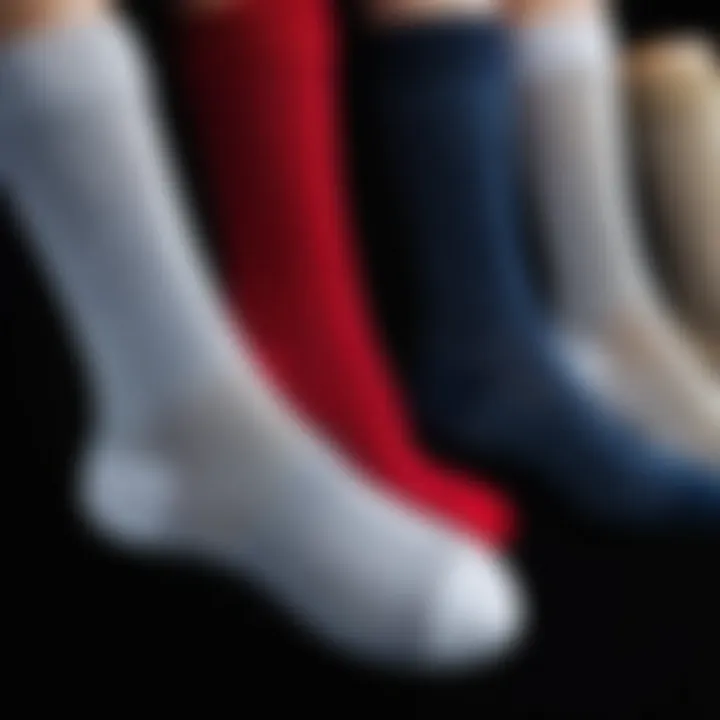
Intro
The significance of socks may often be overlooked, yet they play an essential role in our daily lives. Selling in various markets, their prices fluctuate due to multiple factors. Analyzing these aspects gives a better understanding of consumers’ buying behavior, preferences, and market trends. The increasing awareness about materials, brands, and production methods impacts their pricing. This article examines these factors in detail.
Актуальные акции и скидки
In contemporary retail environments, discounts and promotions on socks have become frequent. Brands often provide sales to attract consumers and enhance competitiveness. It is essential to stay updated on these offers to maximize savings.
Обзор текущих предложений
Many popular retailers such as Amazon and Target currently have various promotions. Seasonal sales or holiday discounts often bring prices down significantly. By checking these platforms regularly, consumers can take advantage of reduced prices on quality products. Additionally, some stores offer bundle deals, where purchasing multiple pairs results in further savings.
Специальные предложения от популярных брендов
Brands such as Bombas and Stance frequently present special promotions. They often provide discounts directly on their websites. Shoppers can subscribe to newsletters for additional deals that are exclusive to subscribers. Following these brands on social media can also lead to discovering limited-time offers.
Рекомендуемые товары
Not all socks are created equal. Here are some recommended products that currently stand out due to their discounts and quality.
Топ товаров со скидками
- Bombas Everyday Socks: Known for their comfort, Bombas is currently offering a 25% discount on select styles.
- Hanes Beefy Socks: These sturdy everyday essentials often go on sale for less than $10 per pack.
Товары, которые стоит купить по сниженной цене
- Gold Toe Men's Crew Socks: Featuring durability and comfort, these socks can often be found at 30% off on various online platforms.
- Darn Tough Merino Wool Socks: Ideal for outdoor enthusiasts, these high-quality socks frequently have promotional discounts around holidays.
"Understanding sock trends and pricing structures can immensely benefit consumers and lead to smarter shopping choices."
The exploration of sock prices, along with understanding promotions and consumer behavior, creates pathways for informed decisions. When shoppers are aware of available discounts, they can better navigate their purchasing experiences.
Intro to Sock Pricing
Understanding sock pricing is crucial in today's diverse and evolving market. This segment delves into how socks, an often overlooked piece of clothing, play a significant role in consumer spending. By analyzing the factors determining sock prices, one can gain insight into broader market trends and consumer behavior. This lays the foundation for informed purchase decisions, especially for those looking to maximize value or explore emerging fashion trends.
Overview of the Sock Market
The sock market has shown remarkable growth in recent years. It encompasses a wide range of products, from everyday essentials to luxury items. Consumers now have access to various types of socks, including athletic, casual, and dress options. Each category comes with its own price points influenced by factors such as material, brand reputation, and design complexity.
Recent trends indicate a growing interest in specialty socks. Eco-friendly options made from sustainable materials have become increasingly popular among environmentally conscious consumers. Additionally, the rise of online shopping has drastically reshaped the landscape, enabling consumers to find socks tailored to their preferences without geographical constraints.
Economic Principles of Pricing
When discussing sock pricing, several economic principles come into play. One foundational concept is the law of supply and demand. With growing interest in various styles and materials, manufacturers respond by adjusting production levels. If demand surpasses supply, prices typically rise, and vice versa.
Another important principle is cost-plus pricing. In this model, a manufacturer calculates the total cost of producing socks and adds a markup for profit. Factors influencing production costs include labor, sourcing of materials, and manufacturing techniques. Bulk purchasing or advanced techniques can lower costs, thereby affecting retail prices.
Lastly, competition plays a pivotal role. As brands compete for market share, they may reduce prices or enhance quality to attract purchasers. Special promotions, such as discounts or seasonal sales, further illustrate how market dynamics influence consumer choices and ultimately impact sock pricing.
Factors Influencing Sock Prices
Understanding sock prices is crucial, as it reveals valuable insights into consumer behavior, the market landscape, and potential future trends. Multiple elements come into play when analyzing sock prices, including material quality, production costs, and branding efforts. Each of these factors can significantly impact how much consumers are willing to pay for socks and what drives their purchasing decisions.
Material Quality
Cotton vs Synthetic
Cotton and synthetic materials each offer unique characteristics affecting price. Cotton is often seen as a natural and breathable option, providing comfort. Its softness makes it popular among consumers who prioritize comfort over durability. In contrast, synthetic materials, such as polyester or nylon, tend to be less expensive, making them attractive to budget-conscious shoppers. These materials are often durable and moisture-wicking, appealing to athletes and outdoor enthusiasts. Thus, the choice between cotton and synthetic directly influences pricing strategies by aligning costs with consumer preferences.
Wool Varieties
Wool provides another quality consideration in sock production. Different varieties of wool, like merino and alpaca, can drastically change the pricing landscape. Merino wool, known for its softness and breathability, often commands a higher price due to its premium qualities. Additionally, alpaca wool is sought for its hypoallergenic properties and warmth. Given that wool socks often target specific markets, the type of wool used can significantly influence consumer willingness to pay, impacting overall pricing strategies in the sock industry.
Durability Considerations
Durability is a vital aspect that influences consumer purchasing decisions. Socks designed to last longer tend to be priced higher, as they can offer better value over time. Consumers may opt for more expensive options if they believe that investing in durability will save them money in the long run. Brands that highlight durability often manage to attract customers willing to pay a premium for their quality. Thus, durability directly affects how brands position their products in the market.
Production Costs
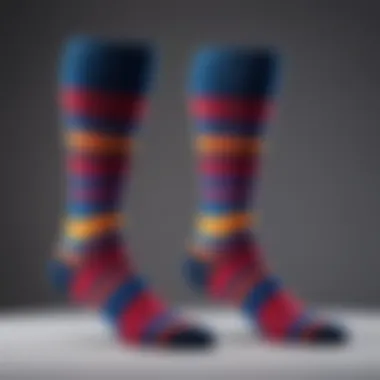

Labor Costs
Labor costs play an essential role in determining sock prices. Regions with higher labor costs typically see an increase in production expenses, leading to higher retail prices. Manufacturers that establish ethical and fair labor practices may charge more, aligning price with consumer values. In contrast, cheaper labor markets can reduce overall costs, offering more budget-friendly pricing. Consequently, labor costs are a critical consideration when analyzing sock pricing dynamics, influencing both supply chains and consumer expectations.
Manufacturing Processes
The complexity of manufacturing processes also affects sock pricing. Different production methods can lead to varying costs. For example, hand-knit socks generally result in higher prices due to their artisan craftsmanship. In contrast, mass-produced socks often use automated techniques, yielding lower costs. A brand's chosen manufacturing approach reflects its target market and pricing strategy. As such, the interplay of manufacturing processes and warranty offerings can steer consumer perceptions toward value versus premium pricing.
Geographic Factors
Geographic factors can further influence sock prices through the cost of shipping and local production capabilities. Socks produced in countries with lower operational costs may be cheaper, while socks imported from nations with stringent production regulations can see elevated prices. Local production, while often more expensive, can appeal to consumers interested in supporting domestic manufacturers. Therefore, geographic factors have a dual impact, guiding pricing While shaping consumer sentiment regarding sustainability and local economies.
Branding and Marketing Strategies
Impact of Brand Reputation
Brand reputation is a significant factor in sock pricing. Recognized brands often command higher prices because consumers associate them with quality and reliability. A strong reputation can justify premium pricing, as consumers may prefer to spend more for assurance of quality. New or lesser-known brands may struggle to sell their socks at competitive prices until they establish a reputation for quality. Thus, brand reputation directly correlates with pricing strategies and consumer choices in the market.
Advertising Expenditures
Advertising expenditures can impact sock prices by shaping consumer perceptions. Brands that invest in marketing often aim to create a strong connection with their audience. High advertising budgets can lead to better brand recognition, making consumers more willing to pay a premium. Conversely, sock brands that rely on minimal advertising may offer their products at lower prices. Thus, the investment in advertising successively influences the overall pricing structure within the sock market.
Influencer Collaborations
Influencer collaborations have gained popularity in the sock industry, shaping consumer behavior significantly. Brands partnering with relevant influencers can navigate consumer preferences and expectations effectively. Such collaborations may elevate perceived value and justify higher prices. However, they also entail significant costs, which could be transferred to consumers. Hence, the effectiveness and costs of influencer partnerships directly impact sock pricing and market positioning.
Consumer Behavior in Sock Purchasing
Understanding consumer behavior in sock purchasing provides essential insights into the complex dynamics of this niche market. Consumer choices are influenced by various factors, from demographics to psychological motives. A comprehensive analysis helps to decode why certain consumers prefer particular types of socks and how these preferences shape pricing and trends.
Demographics of Sock Buyers
Age Groups
The age groups of sock buyers play a crucial role in determining market trends. Younger consumers, especially those in their twenties and thirties, tend to favor trendy designs. This demographic often seeks novelty and is willing to experiment with colors and patterns. In contrast, middle-aged buyers may prioritize durability and comfort, showing a preference for classic styles. Each group's unique preferences not only reflects their lifestyle but also influences the types of socks manufacturers create. For example, youth-oriented brands like Bombas focus on trendy styles, appealing directly to a younger audience.
Income Levels
Income levels significantly impact sock purchasing behavior. Consumers in higher income brackets are more likely to invest in premium socks, which often feature higher quality materials and innovative designs. Meanwhile, budget-conscious consumers may seek out value-oriented brands that offer decent quality at a lower price. Brands like Gold Toe cater to this market segment by providing affordable yet reliable options. Understanding these income distinctions is essential for brands aiming to target their products effectively.
Geographic Distribution
Geographic distribution also influences consumer behavior in sock purchasing. In urban areas, there is a higher demand for fashionable and specialized sock designs, while rural areas tend to prefer basic, functional socks that are more practical for everyday use. Regional climate can also affect sock choices; for instance, thicker wool socks may be favored in colder regions, while lighter cotton socks are more popular in warmer climates. This geographical nuance allows sock brands to tailor their offerings based on location-specific demands.
Psychological Factors
Comfort and Fit
Comfort and fit are vital in the sock purchasing decision. Many consumers prioritize socks that provide a snug fit and feel good throughout the day. Poorly fitting socks can cause discomfort and lead to irritation, pushing buyers to favor brands known for superior comfort. This aspect of consumer behavior explains why companies like Smartwool invest heavily in product research to ensure optimal fit and feel.
Fashion Trends
Fashion trends can greatly influence how consumers select socks. Sock designers often draw inspiration from current styles, ensuring that trendy options are readily available. Consumers who are fashion-conscious will more likely purchase socks that match their outfits or represent their personal style. Designers like Happy Socks capitalize on vibrant patterns and bold colors to attract this segment, demonstrating how critical fashion trends can be in consumer decision-making.
Consumer Loyalty
Consumer loyalty is another significant factor in sock purchasing. Many buyers develop preferences for specific brands due to positive past experiences. Brands that consistently deliver quality and comfort tend to retain customers over time. This loyalty can create a cycle where satisfied consumers become repeat purchasers; they may also recommend the product to others. Brands that focus on building trust and maintaining quality stand out in the saturated sock market.
Overall, understanding these behavior patterns, including demographics and psychological factors, helps brands align their offerings with consumer expectations, maximizing both satisfaction and sales.
Current Trends in the Sock Industry
Understanding the current trends in the sock industry is crucial for recognizing how consumer preferences are shifting. These trends reflect not only aesthetic values but also the growing emphasis on ethical and sustainable practices in manufacturing. The popularity of eco-friendly options and innovative designs shows a general desire for products that align with consumers’ values and lifestyles. Analyzing these trends provides insight into the future of the sock market, revealing opportunities for brands and consumers alike.
Eco-Friendly Sock Options
Sustainable Materials
Sustainable materials have gained traction within the sock industry. These fabrics are typically derived from renewable resources, offering less environmental impact than traditional materials. For instance, bamboo and organic cotton are notable examples that contribute to eco-conscious consumption. Their key characteristic lies in their minimal resource use during production and the reduction of harmful chemical exposure.
The unique feature of sustainable materials is that they can be just as comfortable and durable as conventional options. This combination appeals to many consumers looking for quality along with sustainability. However, potential drawbacks include higher price points and limited availability compared to widely-used materials.
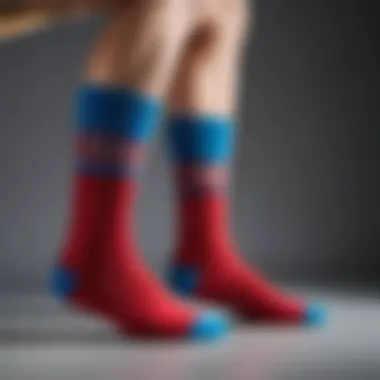
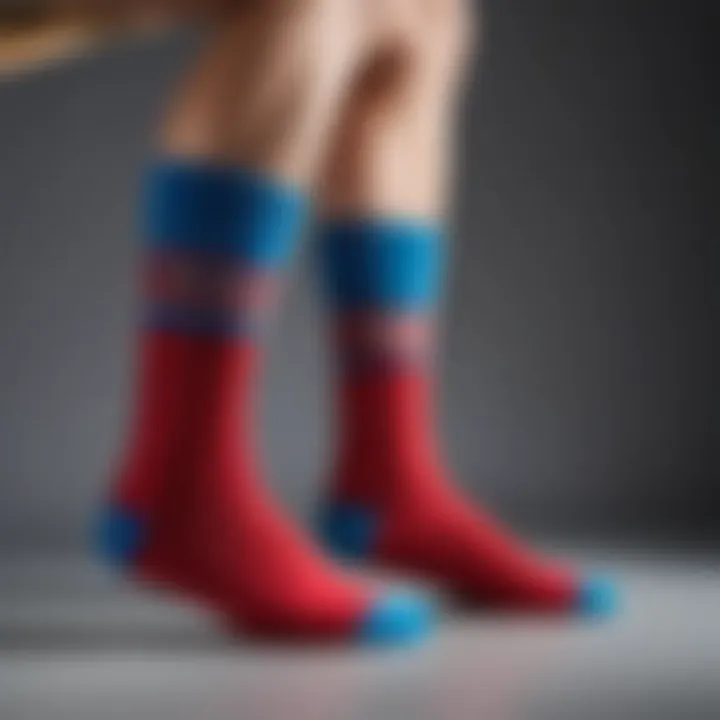
Fair Trade Practices
Fair trade practices play a significant role in shaping the sock market today. This approach ensures that producers receive fair wages and work in safe conditions, enhancing the socio-economic standards of communities involved in production. The key characteristic of fair trade is its commitment to ethical labor practices, providing peace of mind for socially-conscious consumers.
A unique feature of fair trade socks is the certification process, which makes it easier for consumers to identify ethically produced products. This commitment can boost brand loyalty but may result in higher costs that can deter some price-sensitive buyers from making a purchase.
Consumer Demand
Consumer demand for eco-friendly socks is steadily increasing. This aspect emphasizes the growing awareness regarding environmental issues and ethical production among shoppers. The distinctive characteristic of consumer demand today is the shift towards transparency and accountability in the brands they choose.
This trend is particularly beneficial for brands that prioritize sustainability and ethics within their business model. However, the challenge lies in educating consumers about the benefits of these products, which requires strategic marketing efforts to effectively communicate value propositions.
Innovative Designs
Athletic vs Casual Styles
The distinction between athletic and casual styles in socks is significant in today’s market. Athletic socks often emphasize functionality, catering to performance-oriented consumers. Casual styles, on the other hand, focus on aesthetic appeal. The key characteristic of both styles lies in their specific applications and consumer targets.
Athletic socks typically feature moisture-wicking materials and cushioning, which enhances comfort during physical activities. Casual styles prioritize design, often showcasing playful patterns and colors. Each has its own advantages and disadvantages, with athletic socks resulting in higher performance during workouts, whereas casual socks may draw attention for their fashion statement.
Customizable Socks
Customizable socks allow consumers to express individuality and creativity. This aspect of the sock industry caters to personalization demands among consumers who seek unique products. The key characteristic of customizable socks is the ability for consumers to select colors, patterns, and even add their names or images.
This unique feature enhances brand engagement, as consumers feel a sense of ownership over their purchases. However, the challenge lies in balancing production costs while maintaining quality, which can affect pricing strategies.
Fashion Collaborations
Fashion collaborations have become increasingly common in the sock market. These joint ventures between fashion designers and sock brands often result in limited-edition releases that attract trend-conscious buyers. The key characteristic of such collaborations is their ability to blend creativity with commercial appeal.
These joint efforts often feature unique designs and exclusive patterns that generate excitement. However, the downside can be the higher price points associated with limited-edition items, which may exclude budget-conscious consumers from participating.
"Socks are no longer just a necessity; they have become a significant part of personal style and values."
Discounts and Promotions for Socks
Discounts and promotions play a significant role in the sock market, shaping consumer behaviors and driving sales. Understanding these mechanisms can enhance the shopping experience. Shoppers, especially budget-conscious ones, often seek the best value for their money. This helps them maximize their purchases and satisfaction.
Promotions can also help brands engage with potential customers. They serve not only as a means to boost sales but also as a way to introduce products to new audiences. Therefore, analyzing various promotional strategies sheds light on how businesses can tempt consumers while providing them significant savings.
Common Promotional Strategies
Seasonal Sales
Seasonal sales are a common promotional strategy that many retailers employ. During holidays or seasonal changes, retailers often mark down prices significantly on sock products. This contributes to overall sales by attracting customers looking for bargains. The key characteristic of seasonal sales is the time-limited nature of discounts, which creates a sense of urgency for consumers.
The unique feature of seasonal sales is that they can cater to shifts in consumer needs. For example, winter socks may be highlighted during colder months. While these sales are beneficial for clearing out stock, they can also result in inventory shortages during peak times, limiting availability for some shoppers.
Bundle Deals
Bundle deals allow consumers to purchase multiple pairs of socks at a discounted rate. This strategy encourages customers to buy more than they initially planned. The main characteristic of bundle deals is the tangible savings on total purchases. This can be particularly popular for families or individuals who require varied styles or colors.
The unique advantage of bundle deals is that they help consumers save money while offering variety. However, it may not be appealing to all, especially those who prefer to buy single pairs as per their specific needs.
Membership Discounts
Membership discounts provide loyalty rewards for frequent shoppers. Many sock retailers offer special prices for members of their loyalty programs. The key attraction of membership discounts is that they incentivize repeat purchases by providing ongoing savings.
This kind of promotion can help brands retain loyal customers. A unique feature of membership discounts is that they often come with added perks, such as early access to sales. However, some consumers may not see the immediate value, especially if they do not shop frequently enough to benefit from these discounts.
How to Find the Best Deals
Finding the best deals is increasingly important in today’s digital shopping landscape. Being informed can lead to significant savings.
Online Shopping Tips
When shopping online, consumers should take advantage of various strategies to ensure they find the best sock deals. A vital tip is to check multiple websites before making a final purchase. This can help users identify where they can find the lowest prices. Another important characteristic is the timing of purchases; shopping during marked down sales can lead to enhanced savings.
The unique advantage of online shopping tips is that they can guide consumers to remarkable deals without leaving their homes. However, consumers must also be cautious of potential shipping costs that can negate savings.
Price Comparison Tools


Price comparison tools are invaluable for finding sock deals. These tools allow consumers to enter their desired products and compare prices across online retailers instantly. Their key feature is the ability to quickly assess where the best prices are available.
Using these tools can save time and money for the consumer. The main disadvantage, however, is they may not include all retailers, leading to incomplete information on potential savings.
Utilizing Coupons
Utilizing coupons presents another effective strategy for finding deals on socks. Many brands provide digital or printable coupons that can lead to substantial discounts. The primary advantage of using coupons is that they can often reduce prices significantly during checkout.
Coupons may also come directly from manufacturers or retailers, giving consumers additional options. However, consumers need to stay updated on expiration dates and specific requirements, which can be overwhelming for some.
The Role of Online Marketplaces
Online marketplaces play a significant role in the sock industry today. They serve as platforms where consumers can access a vast range of products, including various sock types. These marketplaces allow for easy comparison of prices and styles. Platforms like Amazon and eBay provide the opportunity for brands to reach a wider audience. This has a positive impact on pricing, since competition is fierce. The need for sellers to stay relevant pushes prices into a more affordable range for consumers.
Further, online marketplaces often offer consumer insights. User reviews add a layer of trust and credibility. Consumers have a chance to evaluate products based on the experiences of others. This informs purchasing decisions, making them more confident in their choices. As a result, this dynamic shifts consumer preferences toward brands that perform well in these reviews.
Overall, the role of e-commerce in the sock market is crucial. It simplifies the shopping process and provides substantial benefits to both buyers and sellers.
The Impact of E-commerce on Prices
The rise of e-commerce has significantly altered sock pricing. With online platforms, consumers can easily find the best deals available. This level of transparency has pressured brands to keep their pricing competitive. For instance, socks that were once sold exclusively at brick-and-mortar stores are now often available at lower prices online. This price competition is beneficial for shoppers looking for value in their purchases.
Additionally, dynamic pricing strategies often occur in online marketplaces. Sellers adjust prices based on demand and competition. During peak shopping seasons, such as holidays, discounts may be more prevalent due to high consumer activity. This creates opportunities for savvy shoppers looking to save money.
"The digital marketplace reshapes how consumers perceive value in socks, ensuring that price adjustments reflect market demands and consumer expectations."
Furthermore, e-commerce eliminates geographical barriers. Brands can extend their reach globally, offering options to various market demographics. This accessibility can directly impact how products are priced. The demand in different regions can influence the final pricing strategies of the brands.
Consumer Reviews and Their Influence
Consumer reviews are critical in shaping the landscape of online sock sales. Potential buyers often rely on these reviews to guide their purchasing decisions. A product with numerous positive reviews can elevate its status, while negative feedback can deter purchases.
These reviews not only impact consumer behavior but also influence pricing strategies. Brands that consistently receive favorable reviews may be able to maintain higher prices, reflecting their perceived quality. Conversely, brands with poor reviews must often reduce prices to attract buyers.
Understanding customer assessments allows brands to refine their products and marketing strategies. This feedback loop is essential for innovation and quality assurance. Companies are increasingly attentive to consumer voices, which ultimately strengthens market competition.
In short, consumer reviews act as a pivotal factor in the sock market, directly affecting both pricing and brand reputation. This system empowers consumers while holding brands accountable.
Long-Term Economic Outlook for Socks
Understanding the long-term economic outlook for socks is crucial for various stakeholders, including consumers, manufacturers, and retailers. As we delve into this analysis, we aim to identify future trends and project market movements that will influence sock pricing and innovation.
The sock industry, historically perceived as a niche market, is undergoing significant transformations. As consumer habits evolve, fueled by advancements in technology and shifting societal values, the demand for innovative, sustainable, and affordable products is increasing. Therefore, predicting the future of socks requires a blend of economic understanding and market awareness.
Predicted Trends in Fabric Technology
The future of sock production is inherently linked to fabric technology. Innovations are emerging to enhance the performance and comfort of socks, making them more appealing to a broader audience.
- Smart Materials: We can expect a rise in the use of smart fabrics that regulate temperature or provide moisture-wicking properties. This technology not only improves comfort but can also enhance performance for athletes and outdoor enthusiasts.
- Sustainable Fabrics: With increasing environmental concerns, manufacturers may adopt sustainable materials. Organic cotton, recycled polyester, and bamboo are gaining traction among eco-conscious consumers. These materials can maintain quality while reducing environmental impact.
- Health Features: An emerging trend is the incorporation of health-monitoring features such as embedded sensors that track foot health, which may attract health-focused customers.
These trends in fabric technology indicate a shift toward personalized, functional, and responsible consumption, aligning product development with consumer values.
Market Growth Projections
Market growth in the sock industry can be analyzed through various lenses, including economic indicators and consumer behavior.
- Projected Growth Rates: The global sock market is anticipated to grow steadily. According to industry reports, demand is expected to rise due to increasing awareness regarding health and hygiene, as well as fashion trends impacting buying behavior.
- Regional Insights: Developing regions, particularly in Asia, are projected to show significant growth due to rising disposable incomes and changing fashion preferences. Increased urbanization will force demand for diverse sock styles.
- E-commerce Expansion: The shift towards online shopping is likely to also accelerate market growth. E-commerce platforms enable consumers access to a variety of options, pushing brands to offer competitive pricing and unique products, further driving growth.
In summary, the long-term economic outlook for socks signifies an industry poised for innovation, driven by evolving technologies and diverse consumer demands. Stakeholders must remain adaptable, anticipating shifts that will shape the market for years to come.
End
The conclusion serves as a crucial element in this article, summarizing the insights drawn on the economic aspects of socks and their varying attributes. It encapsulates how consumer behaviors are influenced by not only pricing but also the materials, production, and branding of socks. Recognizing these factors assists consumers in making informed decisions alongside enhancing their understanding of market dynamics.
Summary of Key Findings
Throughout the article, several essential findings were highlighted:
- Diverse Pricing Strategies: The sock market employs varied pricing strategies affected by production costs, quality of materials, and branding.
- Material Importance: The choice of materials has a direct impact on pricing and consumer preference, as demonstrated with cotton, wool, and synthetic options.
- Consumer Demographics: The demographics of sock buyers reveal a broad spectrum, influencing styles, purchasing habits, and trends.
- Role of E-commerce: The influence of online marketplaces and consumer reviews is significant, impacting purchasing decisions and price comparisons.
These findings underscore the interconnectedness of factors influencing sock prices, providing readers with a comprehensive perspective on the subject.
Final Thoughts on Sock Economics
The economics surrounding socks extend far beyond mere pricing. It involves understanding consumer brand loyalty, market trends, and the effects of promotions. Shoppers today are increasingly savvy, often seeking quality over quantity, considering how a product aligns with their values, like sustainability.
Purchasing socks can be perceived as a simple task; however, it reflects broader consumer habits and economic principles. This article encourages readers to view sock purchasing through a more analytical lens, recognizing the substantial impact of their choices on both personal finance and wider economic trends.



